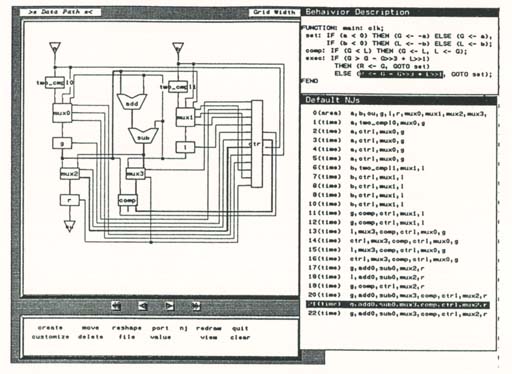
Figure 1. Inputs to co-LODEX
OVERVIEW The user specifies a behavioral specification, a structural specification, and con- straints on area and speed. Figure 1 shows an example. A behavioral specification (upper right) is specified in a hardware description language. A structural specifica- tion (left) is specified in terms of a block diagram of the datapath. Constraints are ex- pressed as inequalities in the gate count or propagation delay and transformed into op- posite inequalities, or default NJs (lower right). One constraint on speed is highlight- ed in each window, the corresponding path (left), the corresponding operation (upper right), and the corresponding default NJ (lower right).
 Figure 1. Inputs to co-LODEX |